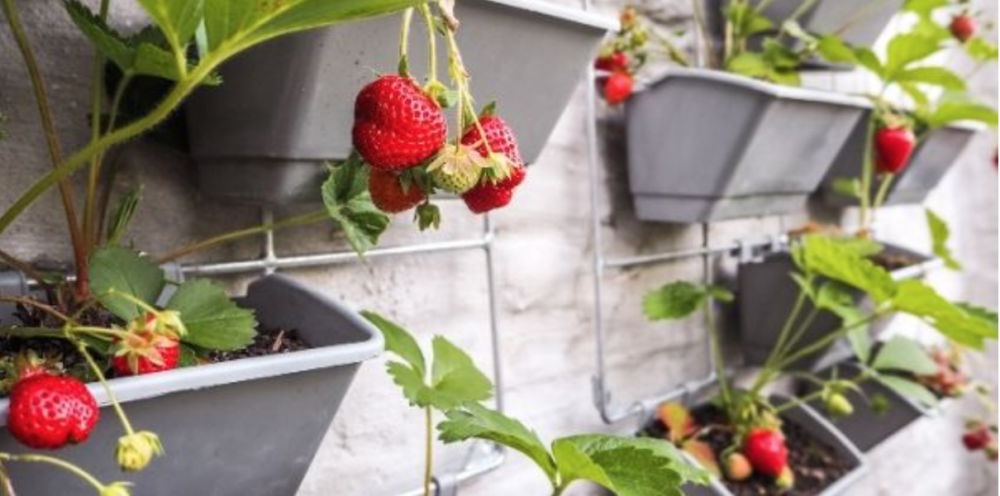
Have an itchy green thumb but no space to grow? Whether you’re in a high-rise or
have a tiny backyard, here are ways to garden when you don’t have space.
Do you love plants, gardening, and fresh vegetables on your plate but have little or
no land to cultivate? Whether you live in a high-rise or have a postage-stamp-sized
backyard, don’t let a lack of acreage stop you. Plants can grow almost
anywhere—just give them the means to do so. With a few pieces of equipment,
some horticultural know-how, and a little elbow grease, you’ll be tending a mini
garden of tasty herbs, fruits, and veggies. Here’s a list of ways to garden when you
don’t have space. Look up the hundreds of sites and videos explaining how to set
them up and maintain them online.
Keyhole Gardening
Keyhole gardens first appeared in Africa in places with poor soil and little water.
They consist of rounded raised beds in the shape of an old-fashioned—you guessed
it—keyhole. The shape isn’t a necessity, but all keyhole gardens feed from a
composting cage in the center of the garden. This is full of vegetable scraps, coffee
grounds, and other materials to keep the soil healthy and rich with nutrients. An open
space in the middle allows access to the entire garden. Keyhole gardens are
relatively easy to build in small areas using cinderblocks, cedar, bricks, and other
upcycled materials.
Hydroponics
A hydroponic garden allows you to grow in smaller areas or garden indoors during
any season. As an environmentally conscious way to garden, hydroponics uses less
water and little to no soil, but it produces big harvests. The more serious you get
about hydroponics, the more you’ll need to spend on equipment. However, a basic
starter hydroponics system is quite affordable—not to mention easy to use and
maintain. You can grow tomatoes, beans, cucumbers, lettuce, radishes, herbs, and
more all year long.
Straw Bale Gardening
Don’t have soil on your property, only poured concrete or asphalt? Straw bales can
be a temporary substitute until you have the time and money to set up raised beds.
You can buy bales at garden centers, feed stores, or from a farm stand out in the
country. With a little fertilizer and other materials, straw bales serve as a great
medium for potatoes, beets, greens, cucumbers, and other veggies. Make sure you
pick up a straw bale, not a hay one. Straw bales last through a couple of seasons,
while hay bales break down quickly.
Vertical Gardening
Can’t spread out? When considering ways to garden when you don’t have space,
stop thinking horizontally. You can set up vertical gardens on a wall or fence or turn
them into freestanding structures, growing plants in stacks or tiers. The simplest
setup is a shelving unit with individual pots and planters, or you could attach a series
of rain gutters to a wall or fence. These are fantastic for growing herbs and smaller
plants. Or, with a little DIY effort, you can build larger systems that support greater
weights, beautifying your backyard, terrace, or front stoop.

